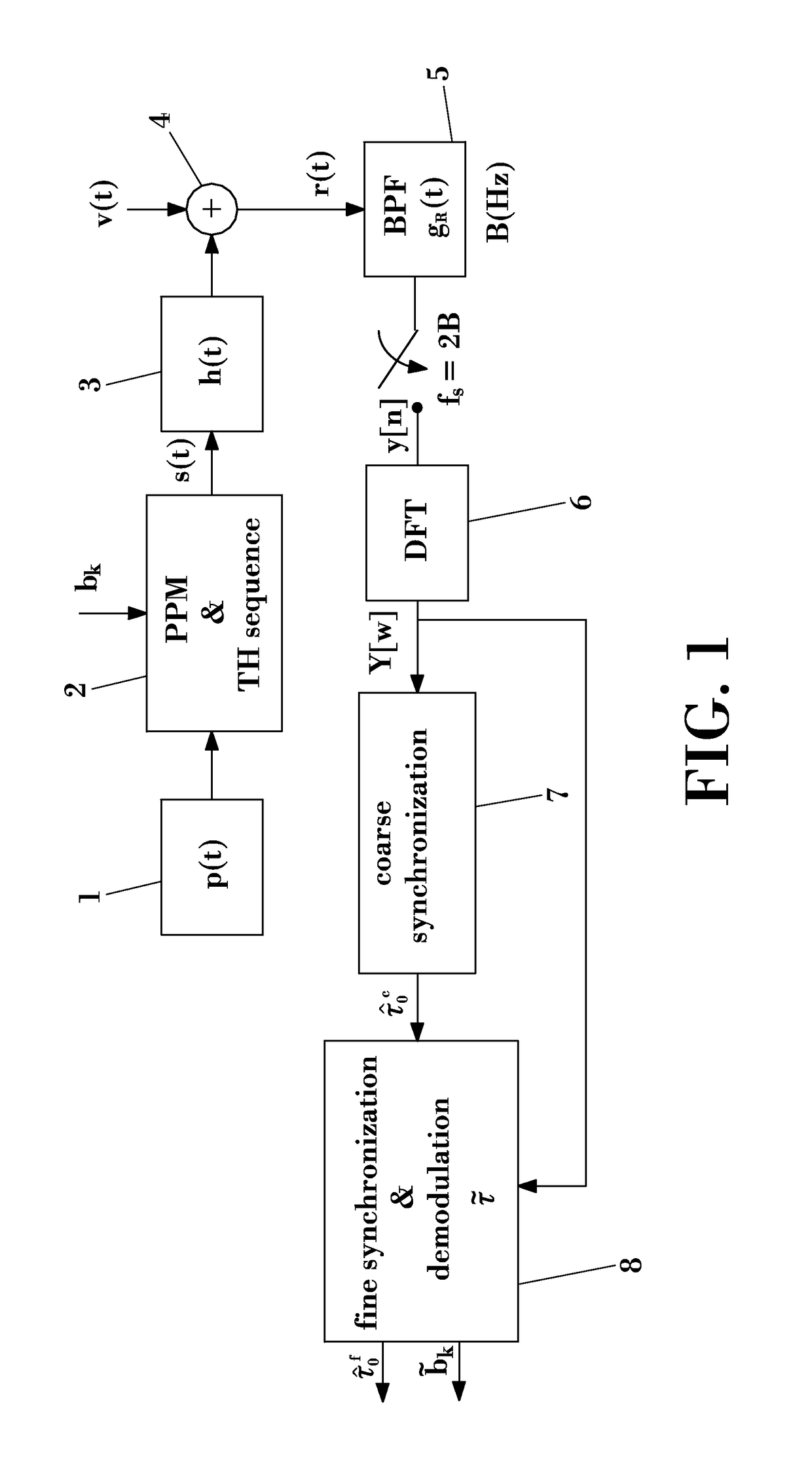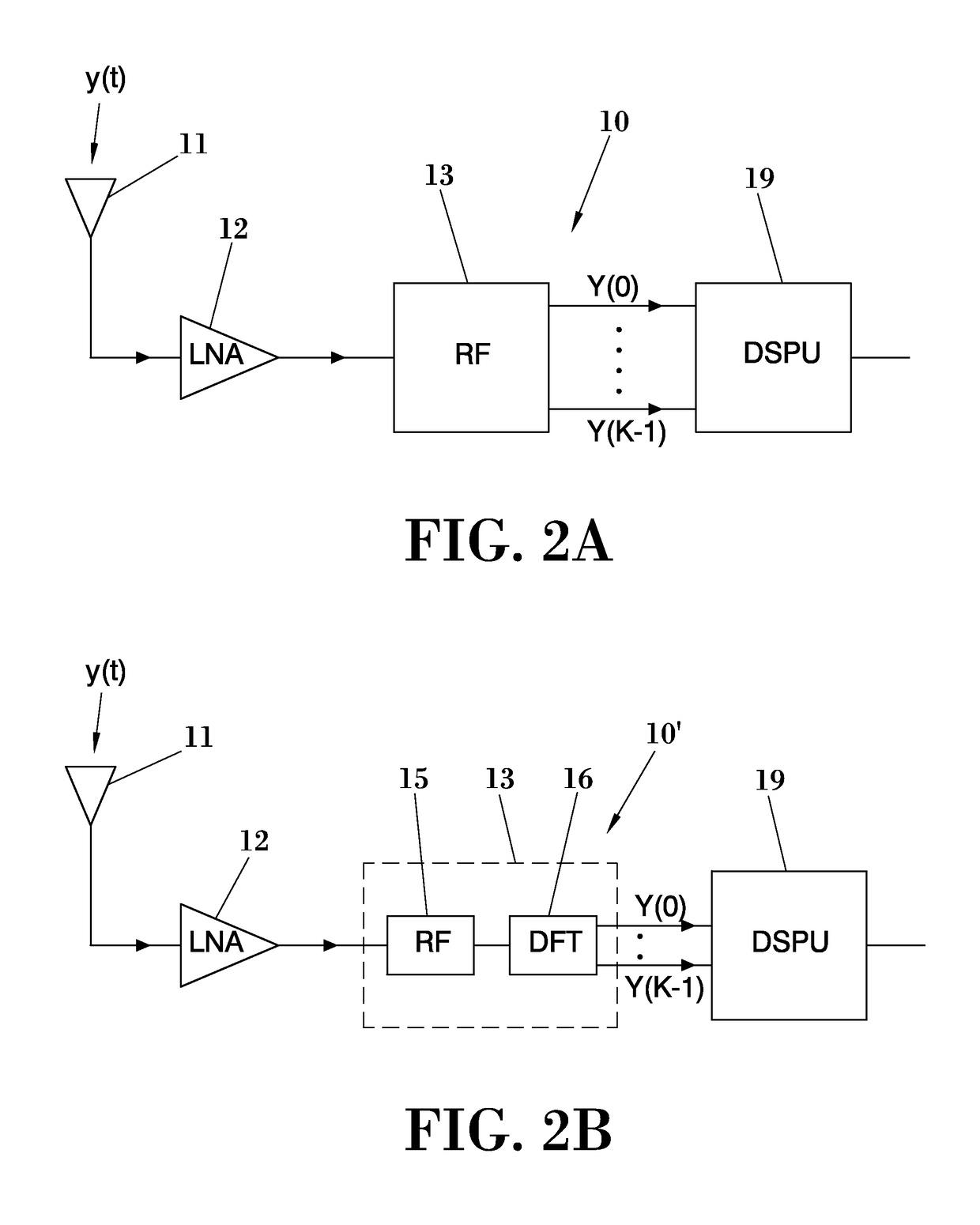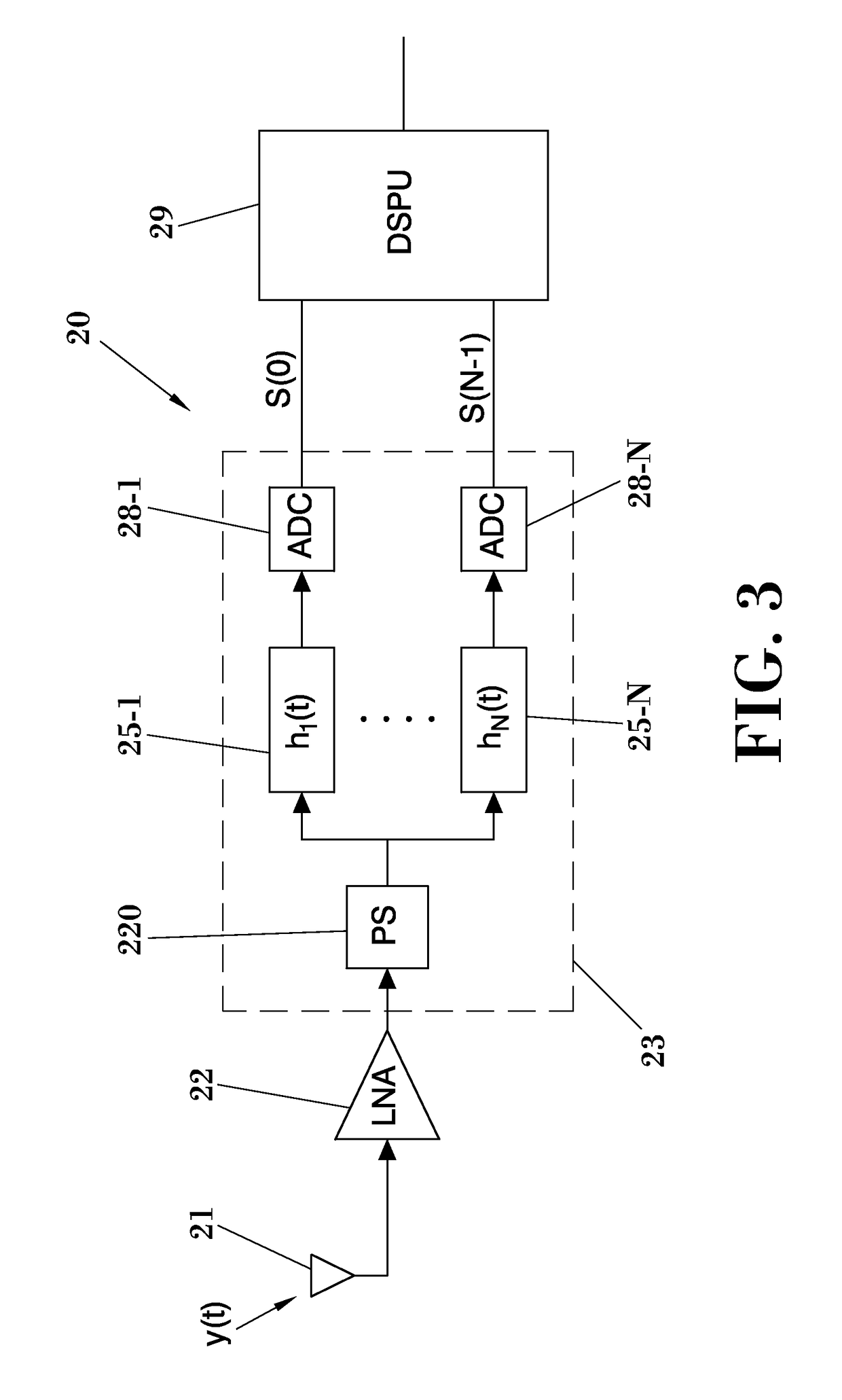Joint demodulation and synchronization in ultra wideband systems
a synchronization and demodulation technology, applied in the field of ultra wideband systems, can solve the problems of reducing the performance affecting the efficiency of the rake receiver, and requiring a very high computational load
- Summary
- Abstract
- Description
- Claims
- Application Information
AI Technical Summary
Benefits of technology
Problems solved by technology
Method used
Image
Examples
Embodiment Construction
Definitions
[0042]In the context of the present invention, the term “approximately” and terms of its family (such as “approximate”, “approximation”, etc.) should be understood as indicating values or forms very near to those which accompany the aforementioned term. That is to say, a deviation within reasonable limits from an exact value or form should be accepted, because the expert in the technique will understand that such a deviation from the values or forms indicated is inevitable due to measurement inaccuracies, etc. The same applies to the term “nearly”.
[0043]Furthermore, the terms “coarse” and “fine” should be understood as follows: “Coarse” refers to a first synchronization stage mainly for identifying the beginning of a symbol. The resolution of this coarse synchronization stage is of the order of the chip duration. In contrast, “fine” refers to a synchronization stage mainly for determining the beginning of a symbol with an expected accuracy of the order of the monocycle pu...
PUM
 Login to View More
Login to View More Abstract
Description
Claims
Application Information
 Login to View More
Login to View More - R&D
- Intellectual Property
- Life Sciences
- Materials
- Tech Scout
- Unparalleled Data Quality
- Higher Quality Content
- 60% Fewer Hallucinations
Browse by: Latest US Patents, China's latest patents, Technical Efficacy Thesaurus, Application Domain, Technology Topic, Popular Technical Reports.
© 2025 PatSnap. All rights reserved.Legal|Privacy policy|Modern Slavery Act Transparency Statement|Sitemap|About US| Contact US: help@patsnap.com



